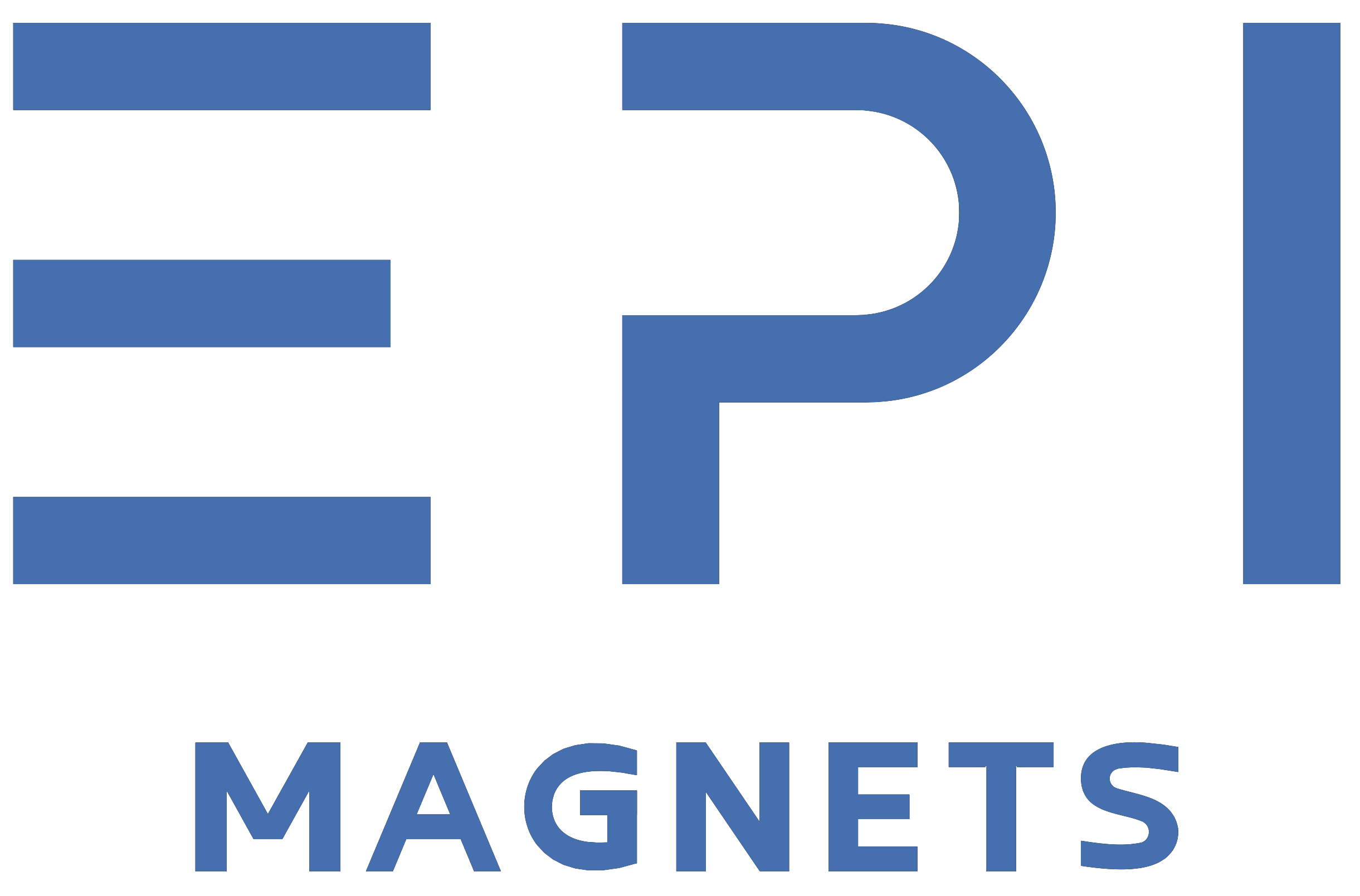Introduction
In the engineering and design of rotating machinery, such as electric motors, one critical challenge that must be addressed is the phenomenon of eddy current losses, particularly in materials used for magnetic components. Samarium-cobalt (SmCo) and neodymium-iron-boron (NdFeB) magnets, being metallic and possessing excellent conductivity due to their low resistivity, inherently face this issue. Eddy current losses not only lead to inefficient operation by generating unnecessary heat within the rotating machinery, including the magnets themselves, but also can degrade the magnets over time. EPI Magnets aims to shed light on the nature of eddy current losses in magnets and explores strategies to minimize these losses in the production of magnetic materials.
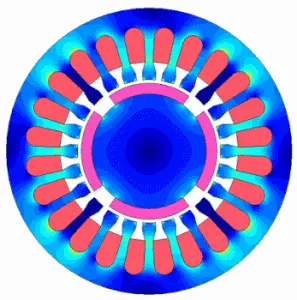
Skin Effect
Understanding and mitigating eddy current losses begin with comprehending their origin, tied closely to the skin effect. The skin effect occurs when alternating current flows through a conductor, leading to a non-uniform distribution of current density across the conductor’s cross-section. As the frequency of the current increases, the current tends to concentrate more on the surface of the conductor, reducing the effective cross-sectional area through which the current flows. This phenomenon is primarily caused by eddy currents—vortex-like currents induced within the conductor by the changing magnetic field associated with alternating current.
Delving deeper into the mechanisms behind the skin effect reveals its intimate connection with eddy currents. Eddy currents, or swirls of electric current, are induced within a conductor due to the changing magnetic fields that accompany alternating electric currents, a principle outlined by the law of electromagnetic induction. As alternating current flows through a conductor, it generates a changing magnetic field both within and around the conductor. This changing magnetic field, in turn, induces vortex-like currents inside the conductor, known as eddy currents.
The impact of these eddy currents becomes more pronounced closer to the center of the conductor, where the induced electromotive force (EMF) by the changing magnetic field is stronger. This results in more robust eddy currents that provide greater resistance to the original current flow, leading to a decrease in current density near the center of the conductor and an increase near its surface.
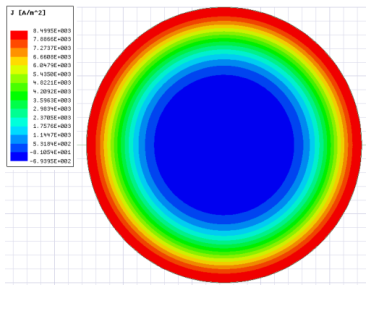
Furthermore, as the frequency of the alternating current increases, the induced EMF—and consequently, the strength of the eddy currents—also increases. This amplifies the skin effect, causing the current to be confined even more to a thin layer at the conductor’s surface. At very high frequencies, the current effectively flows only through this thin surface layer, effectively reducing the conductor’s cross-sectional area available for current flow and significantly diminishing the material’s effective utilization rate.
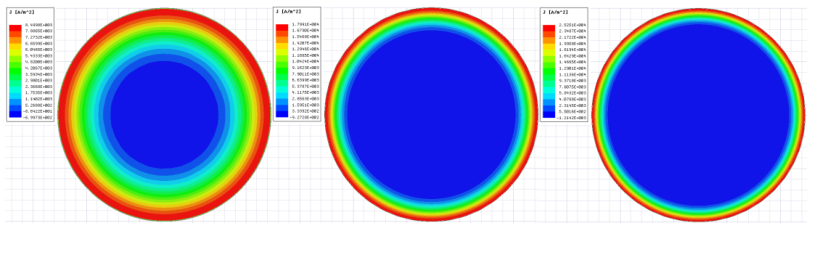
Understanding this intricate relationship between eddy currents and the skin effect is crucial for devising strategies to mitigate eddy current losses. By acknowledging how these currents influence magnetic and electrical properties, especially in applications involving rare earth permanent magnets, engineers can better design materials and systems that minimize these losses, thereby enhancing efficiency and performance.
Eddy Current Losses
Given the low electrical resistance of SmCo and NdFeB permanent magnets, they are particularly susceptible to significant eddy currents when exposed to alternating magnetic fields. These eddy currents generate heat through Joule heating, which can lead to thermal demagnetization if the temperature becomes excessively high.
The extent of eddy current losses is influenced by factors such as the change in the magnetic field, the movement of the magnet, its shape, magnetic permeability, and electrical resistivity. In applications like electric vehicles and elevators where speed control is critical, and power is often supplied by inverters, the higher harmonics of the carrier frequency can exacerbate eddy current losses, leading to thermal demagnetization.
Reducing Eddy Current Losses
To reduce eddy current losses in permanent magnets used in rotating machinery, various technical solutions have been proposed. These include shielding the magnet with columns, segmenting the magnet, and isolating the magnet laterally. From the perspective of magnet production, one of the most effective strategies is to use bonded magnets. The presence of a binder and its high volume fraction significantly increase the electrical resistivity of bonded magnets compared to their sintered counterparts, by a factor of 10^2 to 10^4. However, this comes at the cost of reduced power capacity and a lower maximum operating temperature for the motor.
While bonded magnets offer a significant reduction in eddy current losses due to their increased electrical resistivity, they also impose notable restrictions on motor power and the maximum operating temperature. As a result, the use of low eddy current loss laminated magnets has emerged as another effective solution to reduce eddy current losses without compromising the motor’s performance or the magnet’s properties.
Laminated magnets for low eddy current losses employs magnet segmentation technology, which involves bonding multiple pieces of magnets together using a special high-temperature insulating adhesive. This technique enhances the electrical resistivity of the magnet without altering its composition, dimensional parameters, or the motor’s performance. By increasing the resistivity, this approach effectively reduces the pathways for eddy currents, thus minimizing the losses they cause. Both low eddy current loss NdFeB laminated magnets and SmCo laminated magnets are now being applied in various types of high-speed motors, including axial flux motors, showcasing the practical benefits of this technology in reducing eddy current losses while maintaining high efficiency and performance of the magnetic materials.
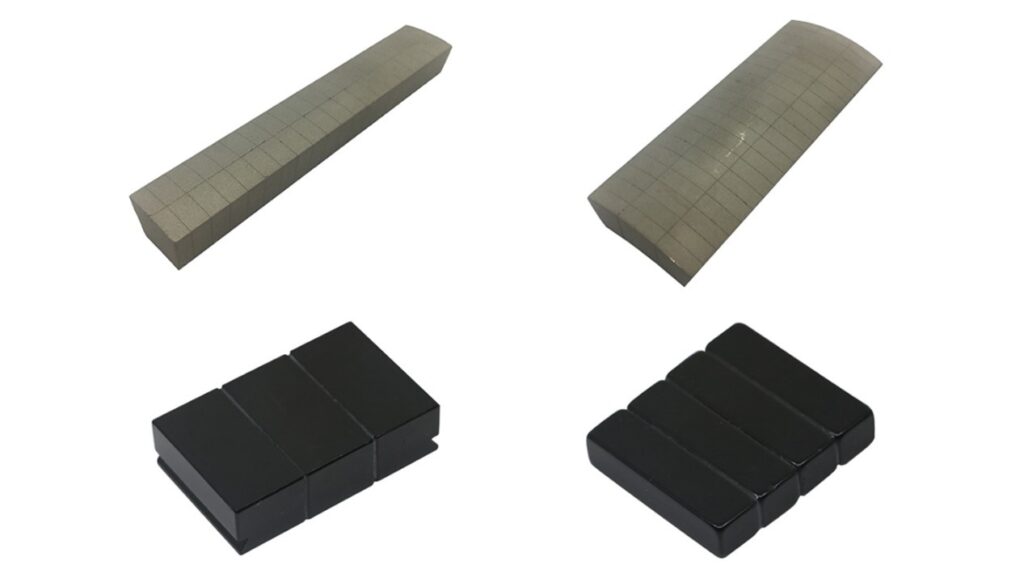
To directly enhance the resistivity of sintered magnets, various methods can be employed, such as incorporating high-resistivity powders (e.g., Al2O3) or applying
SiO2 coatings. However, these approaches may compromise the magnetic performance of the sintered magnets to some extent. Thus, a balance must be struck between resistivity and magnetic properties during the development of these materials.
In conclusion, addressing eddy current losses in rare earth permanent magnets is crucial for the efficiency and longevity of electric motors and other rotating machinery. Through innovative material science and engineering approaches, it is possible to minimize these losses, enhancing the performance and sustainability of these critical components.
